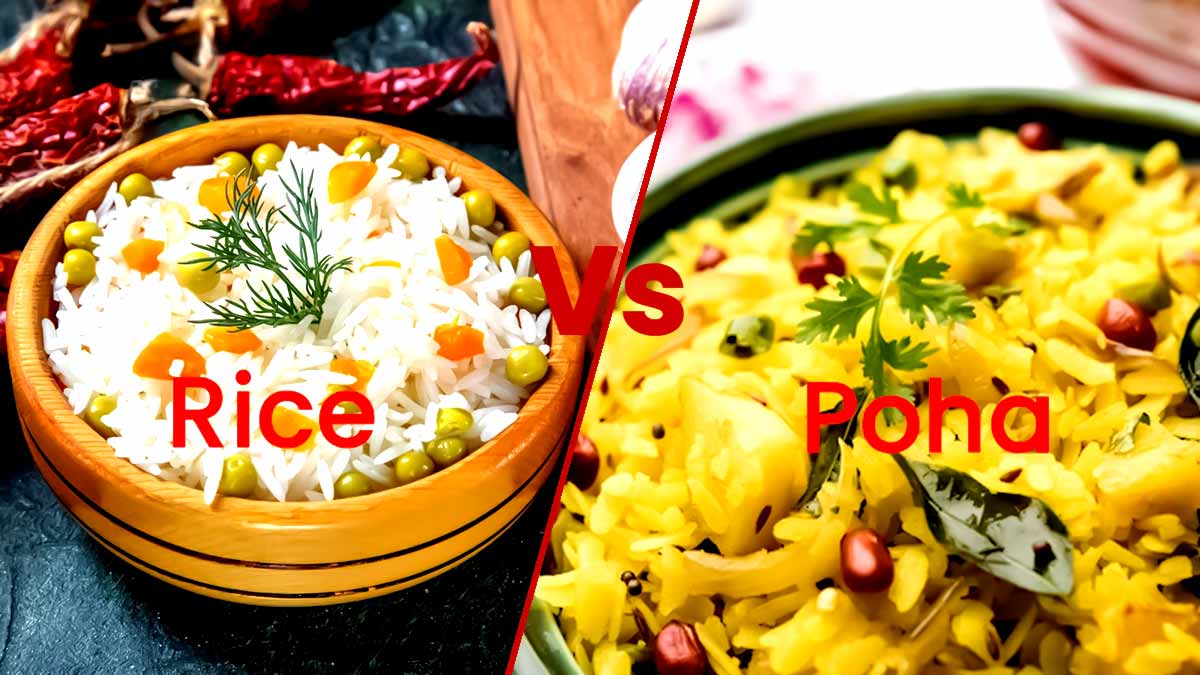
When it comes to choosing between poha and rice, health-conscious individuals often find themselves wondering which option is better. Poha, a flattened rice dish popular in India, and rice, a staple grain in many cultures, both have their unique qualities. However, determining which one is healthier requires considering various factors.
Table of Content:-
1. Nutritional Content
Rice and poha differ significantly in their nutritional profiles. While rice primarily consists of carbohydrates, poha contains a higher amount of protein and dietary fibre. This makes poha a more satiating and nutrient-dense choice compared to plain rice.
2. Caloric Value
When it comes to calories, both poha and rice have similar values. However, since poha is usually eaten in smaller quantities due to its higher satiety factor, it may contribute to better portion control and weight management.
3. Glycemic Index
The glycemic index (GI) is a measure as to how quickly a carbohydrate-containing food raises blood sugar levels. Poha has a lower GI than white rice, which means it causes a slower and steadier rise in blood sugar. This makes it a suitable option for individuals with diabetes or those looking to manage their blood sugar levels.

Also read: 3 Lifestyle Changes That Transformed Masaba Gupta's Life
4. Preparation and Additives
The method of preparation can also impact the overall healthiness of the dish. Poha is typically cooked with vegetables, spices, and herbs, providing additional nutrients and flavour. However, it's essential to be mindful of the cooking oil and other additives used, as they can affect the dish's nutritional value.
5. Individual Preferences and Dietary Needs
Ultimately, the choice between poha and rice depends on personal preferences, dietary needs, and overall health goals. If you prefer a lighter, more fibre-rich option, poha may be a better choice. However, if you require higher carbohydrate content or are following a specific diet plan, rice might be more suitable.
Conclusion
Poha offers certain nutritional advantages over plain rice, such as higher protein and fibre content, lower glycemic index, and potential portion control benefits. However, it's important to consider the overall context of your diet and make choices that align with your individual health goals. Consulting with a healthcare professional or a registered dietitian can provide personalised guidance on choosing the best option for your specific needs.
Also watch this video
How we keep this article up to date:
We work with experts and keep a close eye on the latest in health and wellness. Whenever there is a new research or helpful information, we update our articles with accurate and useful advice.
Current Version